A Visit to the Titan-II Missile Museum
February 1996 - Somewhere Near Tucson, Arizona
Don Boelling, a former Senior Wing Instructor at Davis-Monthan AFB in
Tucson, AZ has
set up his own TITAN-II
page. Don's page has tons of textual info, links, and animations.
If you become interested in "Atomic Tourism" you can visit the
Atomic Tourism Homepage.
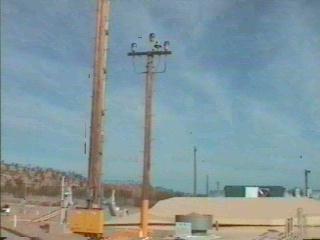
The three lights on the pole indicate the
safety status. Green for safe (all clear), Yellow for caution (approach
with caution), and Red for unsafe, (do not approach). The Silo door is
below the pole.
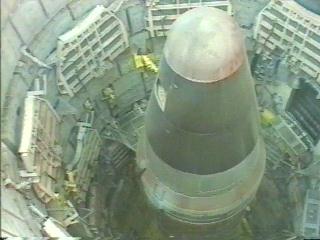
Peeking through the half-open silo door reveals
the nose of the missile.
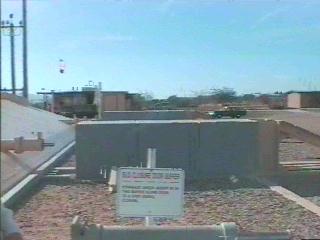
Every few hours, a Russian satellite checks
that these concrete blocks are in-place. They prevent the silo door
(left) from opening more than half-way. This was done to comply with
SMART (Strategic Missile Arms Reduction Treaty), else the site would
have had to have been destroyed.
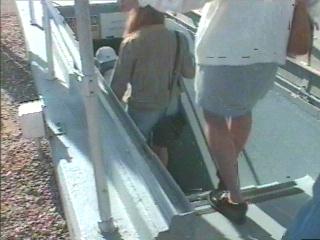
Decending into the control center (200ft below).
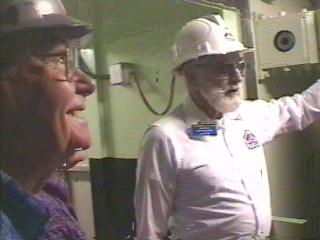
To enter the control
center, you must pass through two of these doors. Note the locking pins.
The doors are 4ft thick concrete with 2" rebar every 8".
They can withstand a blast from an 8x Hiroshima bomb.
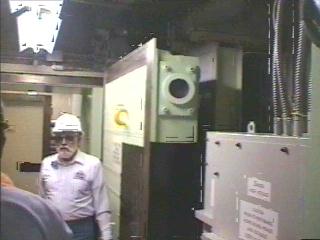
Door #2
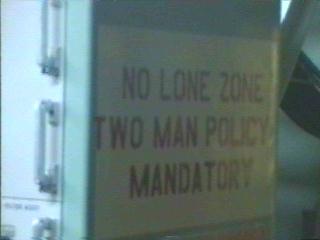
Nobody can wander
around alone. At least two men must be present at all times.
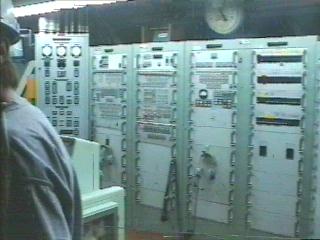
The computer. The rack with the three round
gauges is the "facility monitoring console." To the left of it is the
"Deputy Commander's console" which is where KEY#2 is inserted (two keys
needed to launch) .
The top of the third (from left) rack is where you enter the code for the
butterfly valve. Seven incorrect entries destroys the butterfly valve and
the Titan-II turns into a paperweight. The buttefly valve is what
allows the fuel and oxidizer to mix, causing a launch. Clock indicates
local time, Zulu time (GMT) is on a seperate clock to the left.
All electronics run from 28VDC.
There are 2 battery backups and a 500HP Diesel generator.
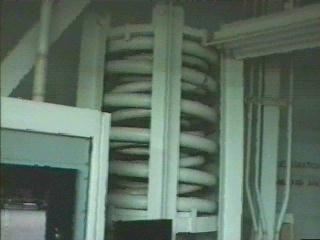
Everything after the second blast door is
isolated from shock. This is one of the springs that suspends the control
center.
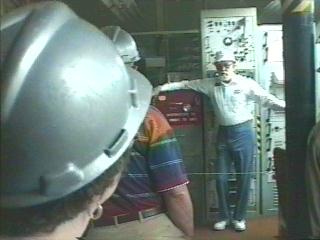
Tour guide showing us the safe where the butterfly
valve activation code is located. Also inside this safe is the information
needed to authenticate any messages from Washington. Two combinations are
required to open the safe, each man knows only one.
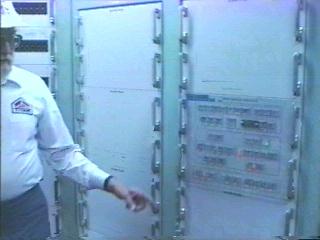
Thanks to modern electronics, these two racks
of equipment have been compressed into this one module. Saves power and
generates less heat.
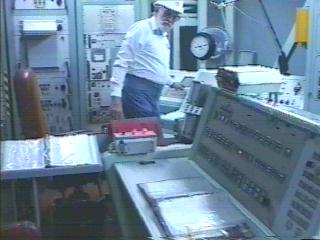
The control panel. KEY#1 is located on the top row.
Zulu clock can be seen and the guide is showing where KEY#2 is located.
The two books contain the launch procedure. The module above KEY#1 is
a fuel and oxidizer tank pressure monitor. It was installed shortly
after a major accident in 1977 at a site in Wichita, KS..
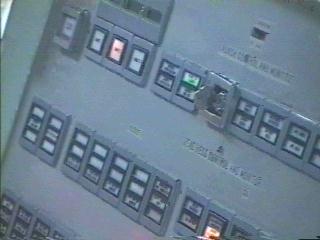
KEY#1. Both keys have to be turned within
two seconds and held for 5 seconds. Green light indicates "all OK".
The cluster of three square buttons to the left (middle one lit) is
the "target select". Each Titan-II missile stores
three targets. Before launch, you simply select target 1, 2, or 3.
The new guidance system (shown two pictures up) has a 100 target
capability, but only three were generally used. The default target
depends on the site and the sortie mission.
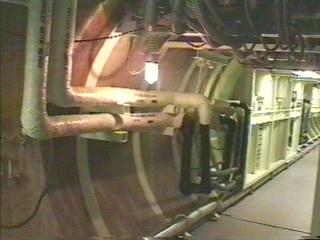
8 Foot thick wall protects the inhabitants. There is enough
food for 30 days.
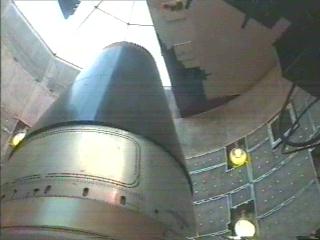
Silo door is
half open to prevent a launch and to keep the Russians happy.
A Visit to the Airplane Boneyard
February 1996 - Somewhere Near Davis-Monthan AFB, Tucson, Arizona
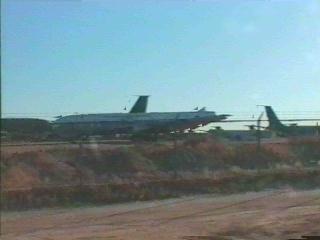
Driving through the desert outside of Tucson,
I found a fenced off area with thousands of planes sitting in mothballs. Some of them had parts missing, like the tail of this jet.
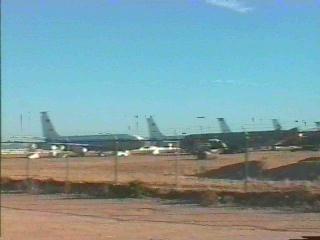
Civilian..
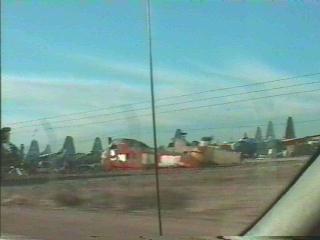
.. and military aircraft seem to be stored here.
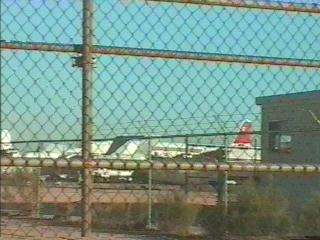
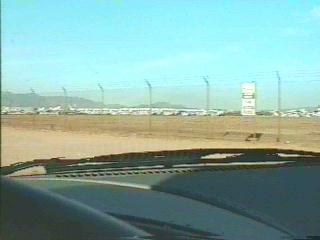
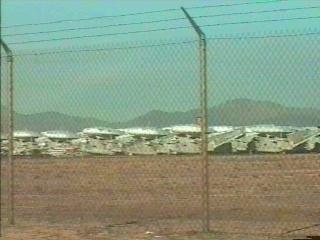
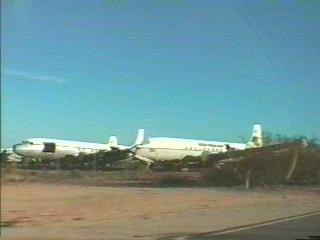
[BACK]
Copyright © 1998, Alastair M. Bor. rev 9.16.98






















